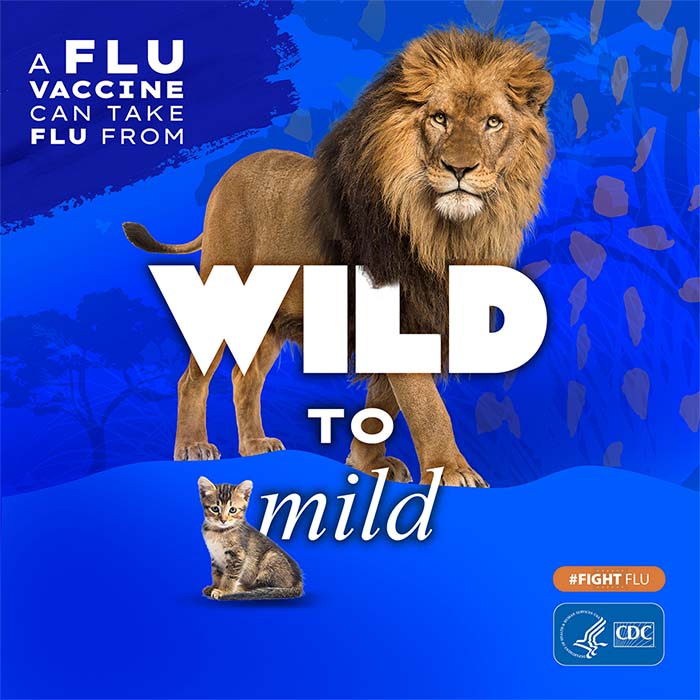Flu & Children at Higher Risk
Prevention and Control of Seasonal Influenza with Vaccines: Recommendations of the Advisory Committee on Immunization Practices — United States, 2024–25 Influenza Season has been published. Updates to this page are forthcoming.

Flu can be dangerous for children
Flu illness is more dangerous than the common cold for children. As of 2020, there are approximately 73 million children in the United States. Each year, millions of children get sick with seasonal flu; thousands of children are hospitalized, and some children die from flu. Children commonly need medical care because of flu, especially children younger than 5 years old.
Some children are at higher risk
Children younger than 5 years old–especially those younger than 2– and children of any age with certain chronic health conditions, are at higher risk of developing potentially serious flu-related complications.

Children of any age with neurologic conditions are more likely than other children to become very sick if they get flu.
- Children younger than 6 months old
These children are too young to be vaccinated. The best way to protect these children is for their parents to get a flu shot during pregnancy and (after birth) for people around them to get vaccinated. A flu shot given during pregnancy has been shown to not only protect the pregnant parent from flu, but also to help protect the baby from flu infection for several months after birth, before he or she is old enough to be vaccinated. - Children aged 6 months up to their 5th birthday
From the 2010-2011 season to the 2019-2020 season, CDC estimates that flu-related hospitalizations among children younger than 5 ranged from 6,000 to 27,000. Even children in this age group who are otherwise healthy are at higher risk simply because of their age. Additionally, children 2 years of age up to their 5th birthday are more likely than healthy older children to be taken to a doctor, an urgent care center, or the emergency room because of flu1,2,3. To protect their health, all children 6 months and older should be vaccinated against flu each year. Vaccinating young children, their families, and other caregivers can also help protect them from getting sick. - American Indian and Alaskan Native children
These children are more likely to have severe flu illness that results in hospitalization or death.4,5 - Children aged 6 months old through 18 years old with chronic health problems, including:
- Asthma and other chronic lung diseases (such as chronic obstructive pulmonary disease [COPD] and cystic fibrosis)
- Neurologic and neurodevelopment conditions including disorders of the brain, spinal cord, peripheral nerve, and muscle such as cerebral palsy, epilepsy (seizure disorders), stroke, intellectual disability (mental retardation), moderate to severe developmental delay, muscular dystrophy, or spinal cord injury
- Chronic lung disease
- Heart disease (such as congenital heart disease, congestive heart failure and coronary artery disease)
- Blood disorders (such as sickle cell disease)
- Endocrine disorders (such as diabetes mellitus)
- Kidney disorders
- Liver disorders
- Metabolic disorders (such as inherited metabolic disorders and mitochondrial disorders)
- Weakened immune system due to disease or medication (such as people with HIV or AIDS, or cancer, or those on chronic steroids)
- Children who are taking aspirin or salicylate-containing medicines
- Extreme obesity, which has been associated with severe flu illness in some studies of adults, may also be a risk factor for children. Childhood obesity is defined as a body mass index (BMI) at or above the 95th percentile, for age and sex.
During the 2021-2022 flu season, 65% of children ages 0-17 hospitalized with flu had at least one underlying health condition like asthma, neurologic disease, obesity, and immune suppression.
Learn more about the importance of annual flu vaccine for children.
The best way to prevent flu is with an annual flu vaccine. CDC recommends that everyone 6 months and older get a seasonal flu vaccine each year, ideally by the end of October. For most people who need only one dose of flu vaccine for the season, September and October are good times to be vaccinated. Some children need two doses of flu vaccine. For those children, it is recommended to get the first dose as soon as vaccine is available—even if this is in July or August—because the second dose needs to be given at least four weeks after the first. Vaccination during July and August also can be considered for children who need only one dose. However, as long as flu viruses are spreading, vaccination should continue throughout flu season, even in January or later. Since it takes about weeks after vaccination for the body to develop antibodies against flu virus infection, it is best to get vaccinated before flu begins spreading in their community. More information on flu vaccination timing is available.
Flu vaccination is especially important for certain people who are higher risk of developing serious flu complications or who are in close contact with people at higher risk. This includes children at higher risk of developing complications from flu illness and adults who are close contacts of those children.

